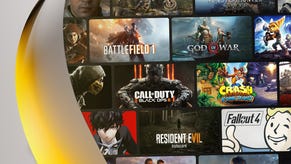In Theory: Is this how OnLive works?
Digital Foundry ponders the technology behind the big splash cloud gaming company
The Lag Factor
But of course, the compression system and how it works is basically irrelevant if it does the job and looks good. Does it make the grade visually, and what about the lag? As mentioned in our original piece, if you accept a certain amount of "givens" that don't quite match all the company's claims, OnLive goes from the being something quite fantastical into something very real. A good frame of initial reference is David Perry's Gaikai. There's absolutely nothing technically outrageous about Perry's presentation in terms of frame-rate and bandwidth figures. If you scale up resolution and maintain 30FPS, OnLive's 5mbps throughput level for 720p with 5.1 surround sound seems reasonable.
So how is the picture quality? An excited beta tester broke his NDA within moments of downloading the 1MB plug-in for his browser and posted these images of Crysis, which do a fairly decent job of showing how OnLive looks at what we can presume to be nigh-on optimum conditions. They might be fake, but it seems unlikely bearing in mind how the Crysis settings seem to be a match for previous OnLive demos.
First impressions are promising. There are obvious compression artefacts in the background foliage and the colour looks muted (streaming video runs in a lower-precision pixel format so this is to be expected). The fact that the leaker has chosen to take screenshots of almost completely static scenes means that the encoder is not really being stressed at all here. We're not seeing OnLive under challenging conditions, but in what amounts to a best-case scenario - beta testers have spoken of a blur that accompanies footage in motion. As an aside though, these shots do allow us to confirm that the image is native 720p.
But What About Top-End Gaming?
On the flipside, claims that you'll be able to run Crysis at max settings on OnLive don't quite compute: having spent quite some time with the game recently, the lack of texture definition and advanced lighting suggests settings closer to the medium level. To be honest, that is probably for the best. More detail means more strain on the encoder, and if fine detail ends up being lost in the encoding process anyway, there is a strong argument that suggests that rendering it in the first place isn't such a great idea.
All of which suggests that OnLive has a place as a provider of a low to mid-range gameplay experience, but not the complete PC/console replacement that it has been marketed as thus far. But of course it all depends on what is defined as "low to mid-range". For us high-end gamers accustomed to pin-sharp HD gameplay, the inevitable variance in picture quality and the latency inherent in the concept and technology instantly puts OnLive at a disadvantage, but what of a more typical living room environment? Sitting 10 feet away from the TV, does compression artefacting matter so much? Will a more casual gamer really care if the controls are laggier?
Perlman's presentation demonstrates some intriguing new possibilities - specifically the notion of broadcasting gameplay to potentially hundreds of thousands of spectators over IP. To achieve this he talks about two levels of encoding: the first being the direct link to the gamer (Jason Garrett-Glaser's explanation making a lot of sense based on what has been seen so far, and can be put to the test when high-quality direct feed video becomes available), the second stream being dedicated to media and other broadcasting features. Presumably this is a high bandwidth output from the host machine which can then be re-encoded again to be beamed out to anyone whether they're using HD, SD or even mobile feeds.






.jpg?width=291&height=164&fit=crop&quality=80&format=jpg&auto=webp)

